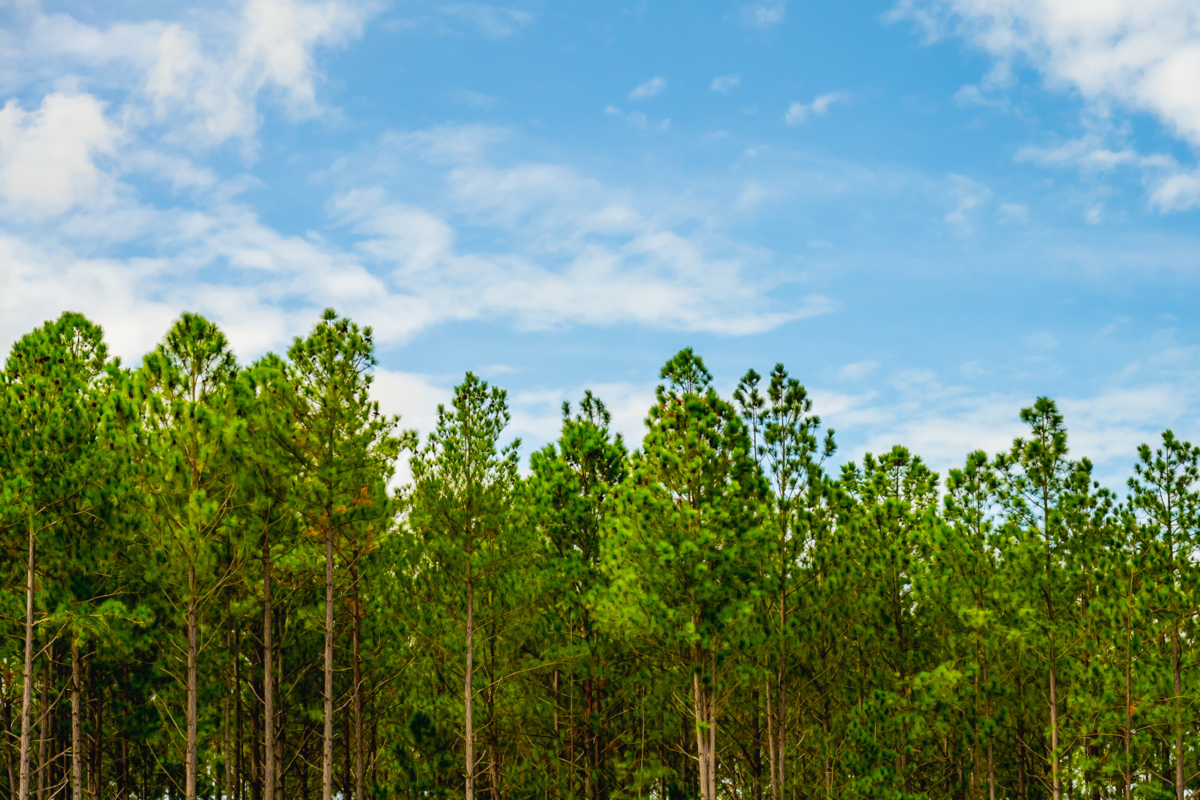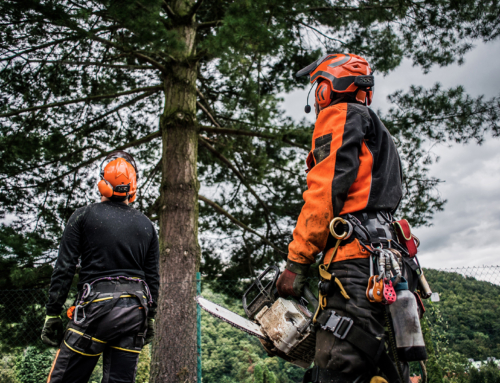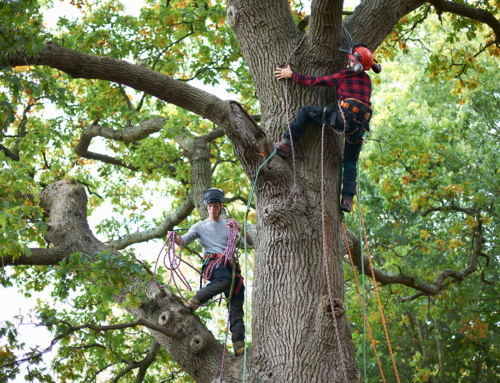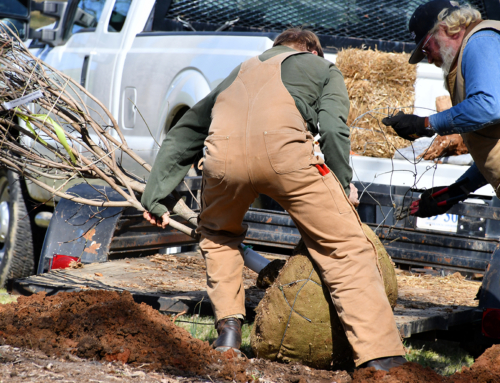Uncovering the Hidden Gems in Your Neighborhood at Mammoth Lakes
What are Tree Inventories?
Are you curious about the trees in your neighborhood? Wondering about their age, health, and potential hazards? Look no further than tree inventories. A tree inventory is a detailed record that catalogues and assesses the trees within a given area. These inventories provide valuable information about the species, size, condition, and location of each tree.
By documenting these details, tree inventories help urban planners, arborists, and property owners make informed decisions about tree management and conservation. They serve as a comprehensive database that can be used to track the overall health and diversity of the urban forest, as well as identify any trees that may pose a risk to public safety.
Tree inventories can be conducted at various scales, from a specific property to an entire city or region. They can be used to inform a wide range of decisions, from planning new developments to prioritizing tree maintenance and removal. Whether you are an environmental enthusiast, a property owner, or a professional in the field, understanding the significance of tree inventories can help you appreciate and protect our precious arboreal companions.
Importance of Tree Inventories at June Lake
Tree inventories are essential for both urban areas and private properties. In urban settings, they contribute to the overall health and sustainability of the environment. By identifying any diseased or hazardous trees, tree inventories assist in planning maintenance and removal strategies, ensuring public safety.
Moreover, tree inventories help monitor the diversity of tree species, promoting a balanced and resilient ecosystem. Diverse urban forests are more resistant to pests, diseases, and environmental stressors, ensuring the long-term viability of the urban canopy. This diversity also enhances the aesthetic appeal of the urban landscape, providing residents with a more visually pleasing and enjoyable living environment.
For private property owners, tree inventories can be equally valuable. They can help homeowners and business owners understand the full extent of their tree assets, including their age, condition, and potential hazards. This information can inform decisions about pruning, fertilization, or even tree removal, ensuring the safety and longevity of the trees on their property.
Benefits of Conducting Tree Inventories at Bishop
The benefits of conducting tree inventories are numerous and far-reaching. Here are some of the key advantages:
- Improved Public Safety: By identifying diseased, damaged, or hazardous trees, tree inventories help prevent potential accidents and property damage. This information allows for initiative-taking maintenance and removal strategies, enhancing public safety.
- Enhanced Tree Management: Tree inventories provide a comprehensive overview of the urban forest, enabling more efficient and targeted management strategies. This can include prioritizing tree maintenance, planning for new plantings, and allocating resources more effectively.
- Better Informed Decision-Making: With detailed data on tree species, size, and condition, tree inventories empower decision-makers, such as urban planners and arborists, to make more informed choices about tree-related policies, budgets, and long-term planning.
- Increased Ecosystem Services: Healthy and diverse urban forests provide a wide range of ecosystem services, including air purification, stormwater management, and carbon sequestration. Tree inventories help monitor and maintain these benefits for the community.
- Improved Property Values: Well-maintained trees can significantly enhance the aesthetic appeal and property values of both residential and commercial properties. Tree inventories help owners and managers make informed decisions about their tree assets.
- Stronger Community Engagement: Tree inventories can foster a greater sense of community ownership and stewardship, as residents become more aware of the trees in their neighborhood and their importance. This can lead to increased participation in tree-related initiatives and volunteer programs.
- Compliance with Regulations: In many areas, tree inventories are required for compliance with local or regional regulations, such as tree preservation ordinances or environmental impact assessments. Conducting a thorough tree inventory helps ensure regulatory compliance.
By understanding the multifaceted benefits of tree inventories, communities and property owners can make more informed decisions and take initiative-taking steps to protect and enhance their urban forests.
How to Conduct a Tree Inventory at Mammoth Lakes
Conducting a comprehensive tree inventory involves a systematic process that includes several key steps. Here is a general overview of the steps involved:
- Define the Scope: Determine the geographic area or property boundaries that will be included in the inventory. This will help you plan the resources and coordination required for the project.
- Gather Existing Data: Collect any existing information about the trees in the area, such as previous tree surveys, maintenance records, or urban forestry plans. This can provide a valuable starting point for the inventory.
- Develop a Data Collection Plan: Decide on the specific data points you will collect for each tree, such as species, diameter, height, condition, and GPS coordinates. Establish a consistent methodology and data recording system.
- Train the Inventory Team: Assemble a team of trained professionals, such as arborists or urban foresters, to conduct the field work. Provide them with comprehensive training on data collection protocols and safety procedures.
- Conduct the Field Survey: Deploy the trained team to systematically survey and document the trees within the designated area. This may involve walking the site, taking measurements, and recording observations.
- Analyze the Data: Compile the collected data into a centralized database or GIS system. Analyze the information to identify trends, prioritize maintenance needs, and inform decision-making.
- Develop an Action Plan: Use the tree inventory data to create a comprehensive management plan, including recommendations for tree care, planting, and removal. This plan should be regularly updated as the urban forest evolves.
- Communicate and Engage: Share the findings of the tree inventory with the community, stakeholders, and decision-makers. Encourage public engagement and participation in tree-related initiatives.
Throughout the process, it is important to maintain consistent data collection methods, ensure the accuracy of the information, and regularly update the inventory to reflect changes in the urban forest over time.
Tools and Techniques for Tree Inventories at Eastern Sierra
Conducting a comprehensive tree inventory requires the use of various tools and techniques to gather, analyze, and manage the data. Here are some of the key tools and techniques commonly used in tree inventories:
- GPS and GIS: Global Positioning System (GPS) devices and Geographic Information Systems (GIS) software are essential for accurately mapping the location of each tree and integrating the inventory data with other spatial information.
- Tree Measurement Tools: Tools such as diameter tapes, clinometers, and laser rangefinders are used to measure the key characteristics of trees, including diameter, height, and canopy spread.
- Tree Identification Guides: Field guides, mobile apps, and online resources help inventory teams accurately identify the species of each tree, which is critical for understanding the diversity of the urban forest.
- Tree Condition Assessment: Arborists and trained professionals use visual inspection techniques and diagnostic tools to assess the overall health and structural integrity of the trees, identifying any potential hazards or maintenance needs.
- Data Management Software: Specialized tree inventory software, spreadsheets, or database systems are used to store, organize, and analyze the collected data, making it easier to generate reports, visualize trends, and support decision-making.
- Remote Sensing: Advancements in technology, such as aerial imagery, LiDAR (Light Detection and Ranging), and satellite data, can complement or even partially replace traditional field-based tree inventories, especially for large-scale or inaccessible areas.
- Community Engagement: Crowdsourcing and citizen science initiatives can involve residents in the tree inventory process, leveraging their knowledge and fostering a sense of community ownership.
By utilizing a combination of these tools and techniques, tree inventory teams can collect comprehensive and accurate data, streamline the data management process, and generate valuable insights to support urban forest management and conservation efforts.
Key Components of a Tree Inventory at Mammoth Lakes
A well-designed tree inventory should capture a range of detailed information about the trees within the surveyed area. The key components typically include:
- Tree Identification: The species, scientific name, and any other distinguishing characteristics of the tree.
- Tree Location: The precise geographical coordinates or address of the tree’s location often recorded using GPS technology.
- Tree Dimensions: Measurements such as diameter at breast height (DBH), height, and canopy spread, which provide insights into the tree’s size and growth.
- Tree Condition: An assessment of the tree’s overall health, structural integrity, and any visible signs of disease, damage, or potential hazards.
- Maintenance History: Information about any previous pruning, fertilization, or other management activities performed on the tree.
- Site Characteristics: Details about the tree’s surrounding environment, such as soil type, proximity to buildings or utilities, and potential conflicts or constraints.
- Ecosystem Services: Estimates of the tree’s contribution to ecosystem services, such as carbon sequestration, stormwater management, and air purification.
- Photographic Documentation: High-quality photographs of the tree, which can be used for visual reference, monitoring, and historical comparison.
- Unique Identifiers: A unique identification number or code assigned to each tree, which can be used to track the tree’s history and maintenance over time.
By collecting and organizing this comprehensive data, tree inventories provide a robust foundation for informed decision-making, effective urban forest management, and long-term planning.
Common Challenges in Tree Inventories and How to Overcome Them at Mammoth Lakes
While tree inventories offer numerous benefits, they can also present several challenges. Understanding and addressing these challenges can help ensure the success of any tree inventory project. Here are some familiar challenges and strategies to overcome them:
- Accessibility and Visibility: Trees located in dense urban areas, on private property, or in hard-to-reach locations can be difficult to access and document. Strategies to overcome this include using remote sensing technologies, establishing partnerships with property owners, and deploying trained teams to systematically survey the area.
- Accurate Tree Identification: Correctly identifying tree species can be challenging, especially for less common or young trees. Providing comprehensive training to the inventory team, utilizing field guides and mobile apps, and collaborating with local experts can help improve the accuracy of tree identification.
- Data Management and Integration: Compiling, organizing, and maintaining the vast amounts of data collected during a tree inventory can be a significant challenge. Investing in specialized tree inventory software, developing standardized data collection protocols, and integrating the data with GIS systems can streamline the process.
- Funding and Resource Constraints: Tree inventories can be resource-intensive, requiring dedicated funding, personnel, and equipment. Strategies to address this challenge include seeking grants, collaborating with community partners, and leveraging volunteer efforts to supplement the inventory team.
- Stakeholder Engagement and Communication: Engaging with various stakeholders, such as residents, property owners, and local government agencies, can be crucial for the success of a tree inventory project. Effective communication, public outreach, and collaborative decision-making can help build support and ensure the long-term sustainability of the inventory.
- Ongoing Maintenance and Updates: Tree populations are dynamic, with new plantings, growth, and removals occurring over time. Maintaining the accuracy and relevance of the tree inventory requires regular updates and monitoring. Establishing a systematic process for data updates and incorporating modern technologies can help address this challenge.
- Integrating with Other Data Sources: Combining tree inventory data with other spatial and environmental data, such as land use, infrastructure, and environmental monitoring, can provide a more holistic understanding of the urban forest and its interactions with the broader ecosystem. Overcoming data integration challenges requires technical expertise and cross-departmental collaboration.
By anticipating and proactively addressing these familiar challenges, tree inventory projects can be more successful in delivering the desired outcomes and supporting the long-term health and sustainability of the urban forest.
Case Studies: Successful Tree Inventories in Different Settings at June Lake
Tree inventories have been successfully implemented in a variety of settings, from small urban neighborhoods to large-scale municipal and regional initiatives. Here are a few case studies that illustrate the diverse applications and benefits of tree inventories:
- New York City’s Street Tree Census: The New York City Department of Parks and Recreation has conducted comprehensive street tree inventories since the 1990s. The latest census, completed in 2015, documented over 666,000 street trees across the five boroughs. This data has been instrumental in informing tree planting, maintenance, and management strategies, as well as supporting the city’s goal of increasing the urban tree canopy.
- Seattle’s Urban Forest Inventory and Assessment: The City of Seattle has undertaken a multi-year effort to inventory and assess the health of its urban forest, including both public and private trees. The data collected has enabled the city to identify and prioritize maintenance needs, plan for new tree plantings, and engage the community in urban forestry initiatives.
- Residential Tree Inventory in Cary, North Carolina: The town of Cary, North Carolina, conducted a detailed tree inventory of residential properties to help homeowners better understand and manage the trees on their land. The inventory provided valuable information about the species, size, and condition of the trees, which homeowners could then use to make informed decisions about pruning, removal, and replanting.
- Regional Tree Canopy Assessment in the Washington, D.C. Metropolitan Area: The Metropolitan Washington Council of Governments (MWCOG) has led a collaborative effort to assess the tree canopy across the broader Washington, D.C. region. This regional-scale inventory has helped local districts identify opportunities for urban forest expansion and develop coordinated strategies to enhance the overall tree canopy.
- Campus Tree Inventory at the University of California, Davis: The University of California, Davis, has maintained a comprehensive tree inventory for its campus, which includes over 10,000 trees. This inventory has enabled the university to effectively manage its urban forest, plan for new plantings, and ensure the long-term health and sustainability of the campus environment.
These case studies demonstrate the versatility and value of tree inventories in a range of settings, from municipal-scale initiatives to private property management. By leveraging the insights gained from these inventories, communities and organizations can make more informed decisions, foster community engagement, and contribute to the overall health and resilience of urban forests.
Tree Inventory Software and Apps at Mammoth Lakes
As tree inventories have become more sophisticated and widespread, a variety of software and mobile applications have emerged to support the data collection, management, and analysis processes. Here are some of the popular tools and technologies used in tree inventories:
- Geographic Information Systems (GIS) Software: GIS platforms, such as ArcGIS and QGIS, allow for the spatial mapping and analysis of tree inventory data. These tools enable users to visualize tree locations, analyze spatial patterns, and integrate the inventory data with other geospatial datasets.
- Specialized Tree Inventory Software: Dedicated tree inventory software, like Tree Keeper, Tree Plotter, and I-Tree, provide comprehensive solutions for data collection, storage, and reporting. These platforms often include features like mobile data entry, tree health assessments, and maintenance scheduling.
- Mobile Apps: Smartphone and tablet applications, such as Tree Snap, Tree Plotter, and Trees Count, allow inventory teams to collect and upload tree data directly from the field. These apps often incorporate GPS, camera, and data entry features to streamline the data collection process.
- Remote Sensing Technologies: Advancements in remote sensing, including aerial imagery, LiDAR, and satellite data, can supplement or even replace traditional field-based tree inventories. Tools like ArcGIS Urban and I-Tree Canopy leverage these technologies to provide large-scale, cost-effective tree assessments.
- Citizen Science Platforms: Crowdsourcing initiatives and citizen science apps, such as naturalist and Tree Snap, engage members of the public in tree identification and data collection. These platforms can help expand the reach and depth of tree inventory efforts.
- Data Visualization and Reporting Tools: Software like Tableau, Power BI, and custom web-based dashboards can be used to analyze, visualize, and communicate the findings of tree inventories. These tools help transform raw data into actionable insights for decision-makers and the public.
By leveraging these specialized software and mobile applications, tree inventory teams can streamline data collection, enhance data quality, and generate more comprehensive and accessible reports to support urban forest management and conservation efforts.
Conclusion: The Future of Tree Inventories at Mammoth Lakes
As the importance of urban forests and their role in promoting sustainable, livable communities continues to grow, the significance of tree inventories will only become more pronounced. In the years to come, we can expect to see several key trends and advancements in the field of tree inventories:
- Increased Adoption and Integration: Tree inventories will become more widely adopted by municipalities, property owners, and land management agencies as the value of this data becomes more widely recognized. These inventories will also become increasingly integrated with other urban planning and environmental management systems.
- Technological Advancements: Emerging technologies, such as high-resolution aerial imagery, LiDAR, and machine learning, will enhance the efficiency and accuracy of tree inventory data collection and analysis. This will enable larger-scale, more frequent, and more detailed assessments of urban forests.
- Citizen Science and Community Engagement: Tree inventory efforts will continue to leverage the power of citizen science and community engagement, empowering residents to contribute their knowledge and participate in the stewardship of their local urban forests.
- Predictive Analytics and Scenario Planning: Tree inventory data, combined with advanced analytics and modeling, will enable more sophisticated predictive capabilities, allowing decision-makers to anticipate the impacts of factors like
Skyline Tree Service is a locally owned and operated tree service company based out of the greater Mammoth Lakes, June Lake, and Bishop CA area. Please contact us for an appointment.




